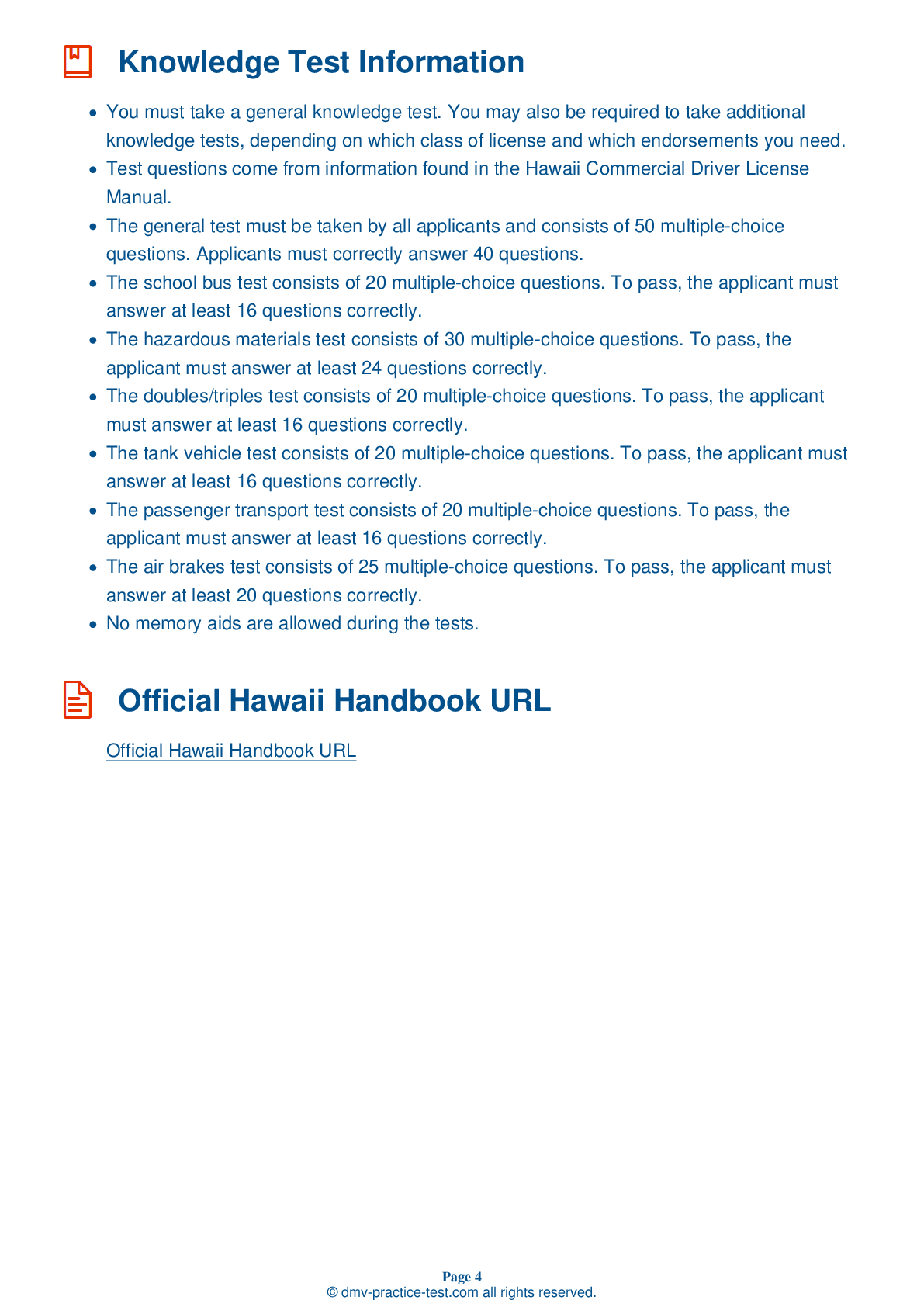Air Brakes Endorsement Test | Hawaii 2025 #1 Page 3 of 4
Train for FREE online with our Hawaii CDL air brake test. The official exam test consists of several obligatory parts, with all of them checking your knowledge of different blocks of road rules. If you need to obtain a HI Class A/Class B driver license in 2025, practice as much as possible. Free sample tests published on our website will help you check and improve your knowledge and boost your grades. Please bear in mind that the requirements for CDL may vary from state to state.
13 . If the safety relief valve in the air brake system releases air:
An air brake system has a safety relief valve, which releases air from the tanks if the pressure gets too high. If the valve must operate, something in the system is wrong and should be addressed by a mechanic.
14 . Vehicles equipped with Anti-Lock Braking Systems (ABS) have ____ malfunction lamps to indicate when the ABS is not working.
Vehicles with ABS have yellow malfunction lamps to alert drivers when the braking systems are not working. Be sure you know where the malfunction lamp on your vehicle is before beginning a trip.
15 . During an applied leakage test, the maximum leakage rate for a triple combination vehicle is ____ in a minute.
It is important to know the maximum air loss rate that is safe for your specific vehicle. A triple combination should have a leakage rate no higher than 6 psi in a minute during an applied leakage test.
16 . Some air brake systems introduce alcohol into the system to:
Some air brake systems contain an alcohol evaporator. An evaporator introduces alcohol into the system to help inhibit the formation of ice in cold weather.
17 . Air pressure should build up in a single air system within:
In single air systems, air pressure should build from approximately 50 to 90 psi within three minutes.
18 . What can happen if the air pressure gets too low in an air brake system?
Pressing and releasing the brake pedal unnecessarily can let air out of the braking system faster than the compressor can replace it. Air brakes may cease to work effectively if the pressure becomes too low.
See the exact questions that will be on the 2025 Hawaii DMV exam.
99.2% of people who use the cheat sheet pass the FIRST TIME
Lillian MCcranie explains how our CDL study guide was helpful in passing the exam and recommends it to everyone.
Cameron tells us how he purchased the CDL exam, and found it to be a useful tool which helped him pass the exam and find a job.



